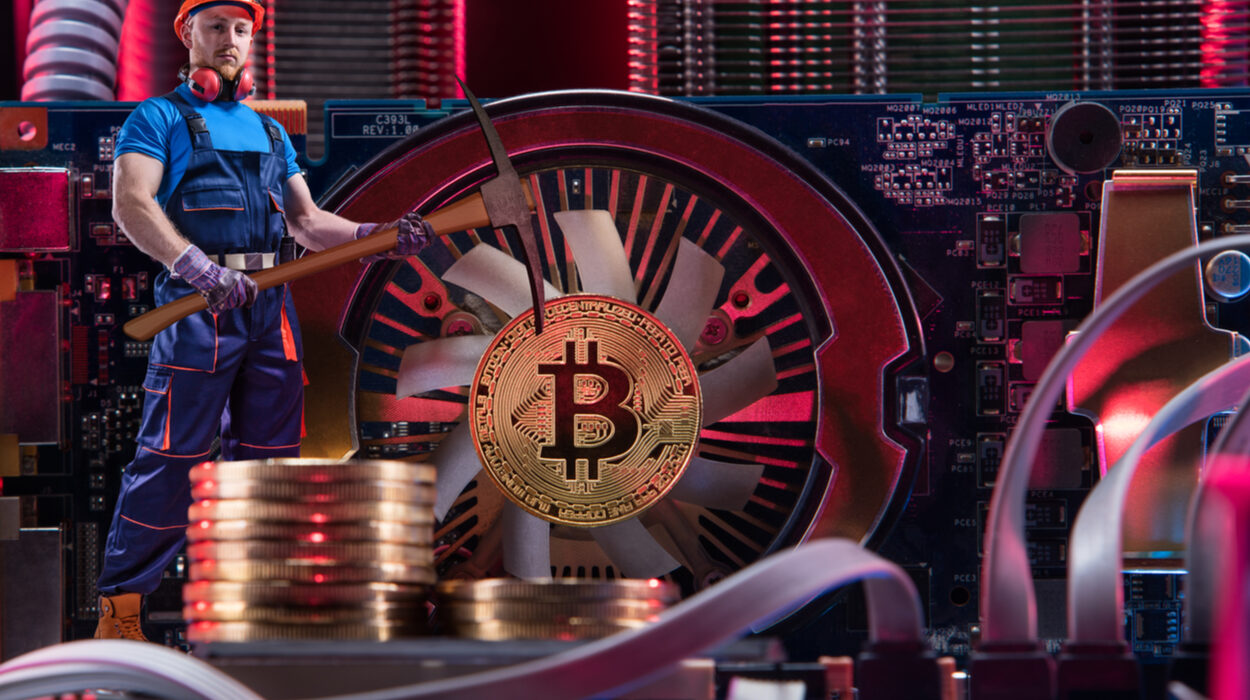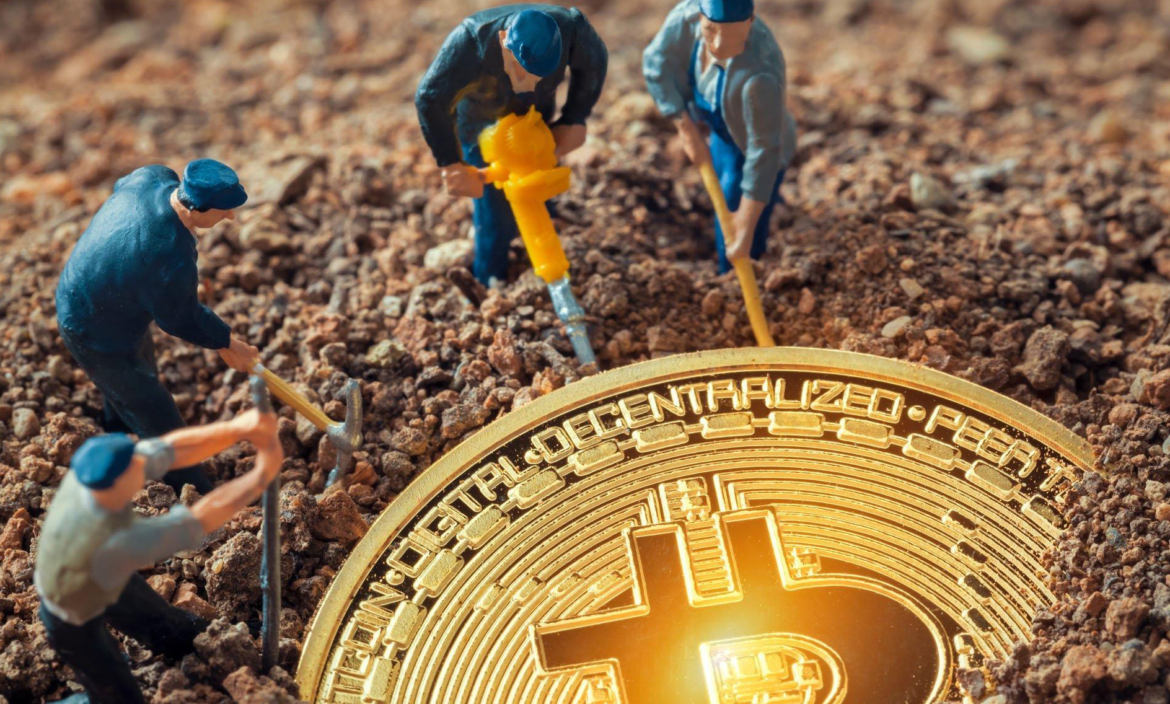Bitcoin mining is what keeps the Bitcoin network running. The network operates on a distributed record known as the blockchain, ensuring decentralisation. Bitcoin mining was first created by the anonymous person Satoshi Nakamoto in 2009. It does two important things: it confirms transactions by solving challenging math problems, and it puts new bitcoins into circulation. Mining used to be a small-scale activity done on home computers, but it has evolved into a global industry with specialised hardware, smart software, and huge data centres that span continents.
Proof of Work Mechanics
The Proof of Work consensus method is what makes Bitcoin mining possible. Miners are attempting to solve a cryptographic problem that employs the SHA-256 hashing method. The purpose is to find a hash value that fulfils the Bitcoin network’s current difficulty goals. The miner who finds this hash first gets to add the next block of transactions to the blockchain. The miner gets new bitcoins and any transaction fees that came with that block as a reward.
Bitcoin changes how hard it is to mine about every two weeks, based on how quickly blocks are located. This ensures the addition of blocks approximately every 10 minutes, regardless of the number of miners in operation. As additional computing power joins the network, which is usually measured in exahashes per second, the difficulty goes up. This keeps the timing of blocks and the stability of the network the same.
Evolution of Mining Hardware
In the beginning, you could mine Bitcoin with a regular CPU. After that, GPUs became the standard since they could process data much faster. But when competition grew and the network hash rate skyrocketed, Application-Specific Integrated Circuits (ASICs) took over. Mining hardware manufacturers design ASICs to perform SHA-256 hashing efficiently and with minimal energy consumption.
 Modern mining operations typically utilise hundreds of ASICs, which are housed in separate buildings located in areas with inexpensive electricity or cooler climates. The US, Kazakhstan, Canada, and Russia are now major mining hubs around the world. Bitmain and MicroBT are two of the biggest companies in the market. Engineers are continuously developing machines that operate more efficiently, providing a higher number of terahashes per second (TH/s) while consuming fewer joules per terahash.
Modern mining operations typically utilise hundreds of ASICs, which are housed in separate buildings located in areas with inexpensive electricity or cooler climates. The US, Kazakhstan, Canada, and Russia are now major mining hubs around the world. Bitmain and MicroBT are two of the biggest companies in the market. Engineers are continuously developing machines that operate more efficiently, providing a higher number of terahashes per second (TH/s) while consuming fewer joules per terahash.
Economics of Bitcoin Mining
Mining for Bitcoin is very competitive and needs a lot of money. The profitability of a mining operation is influenced by the costs of mining hardware, the price of electricity, the difficulty of the network, and the market price of Bitcoin. When miners improve their equipment, move their operations, or even temporarily shut down when prices are low and difficulty is high, they have to find a balance between their operating costs and their expected profits.
The Bitcoin block reward will be 6.25 BTC in 2025. However, the Bitcoin halving occurs every four years, resulting in a 50% reduction in this payout. People think the next halving will happen in 2028, and the reward will go down to 3.125 BTC. This built-in scarcity mechanism has traditionally driven Bitcoin’s price cycles and makes mining as a business model more complicated in the long run.
Sustainable Bitcoin Mining Practices
The environmental impact of Bitcoin mining is one of the most talked-about issues. Proof of Work uses a lot of electricity, which makes some worry about its carbon footprint and long-term viability. Researchers say that the Bitcoin network uses more energy each year than certain small countries. Environmentalists, regulators, and investors have all spoken out against this.
But the industry is working hard to solve these problems. A lot of mining companies are switching to renewable energy sources like wind, solar, and hydroelectric electricity. Hydropower has been the main source of energy for greener mining operations in places like Quebec and Sichuan. Some businesses are also trying out stranded energy alternatives, such as using natural gas flaring to power mining rigs that aren’t connected to the grid. There are also plans to look into carbon offsets and heat recycling initiatives to lessen the damage to the environment.
Bitcoin Mining Legal Landscape
Around the world, the legal and regulatory response to Bitcoin mining is very different. China banned all crypto mining in 2021, saying it was bad for the environment and the economy. This restriction made many miners go to places with better laws, like Texas, where energy markets are not controlled and the government supports digital assets.
 Simultaneously, regulators in the US and EU are closely monitoring the environmental impact of mining and exploring methods to compel companies to disclose their energy consumption, monitor their emissions, and potentially levy taxes on energy-intensive enterprises. The SEC and CFTC are also interested in how open mining companies are in terms of their finances, especially those that are going public or selling tokenised assets.
Simultaneously, regulators in the US and EU are closely monitoring the environmental impact of mining and exploring methods to compel companies to disclose their energy consumption, monitor their emissions, and potentially levy taxes on energy-intensive enterprises. The SEC and CFTC are also interested in how open mining companies are in terms of their finances, especially those that are going public or selling tokenised assets.
Mining and Network Security
Mining Bitcoin is crucial for the network’s overall safety and strength. It is almost impossible for any one person to launch a 51% attack, which would let them change transaction history or double-spend bitcoin, because mining takes up so much computing power. The fact that miners are spread out all around the world lowers systemic risks even more, making Bitcoin one of the safest blockchain networks out now.
Mining not only protects the network, but it also fairly distributes coins. Bitcoin’s issuance is based on open competition, which supports decentralisation and gives everyone around the world an equal chance to participate. This approach is different from pre-mined cryptocurrencies.
Final thoughts
Mining will keep changing as more people use Bitcoin. New technologies, environmental adaptation, and clear rules will determine the direction of the industry. ASIC hardware improvements will probably make mining operations work better and use less energy. When combined with smart grids, mining operations could become flexible, responsive parts of national energy infrastructures. Bitcoin’s Proof of Work is vital to its function and security, so it won’t change. But better sustainability, more regional decentralisation, and responsible governance might make the story about Bitcoin mining’s position in the digital economy more balanced.



